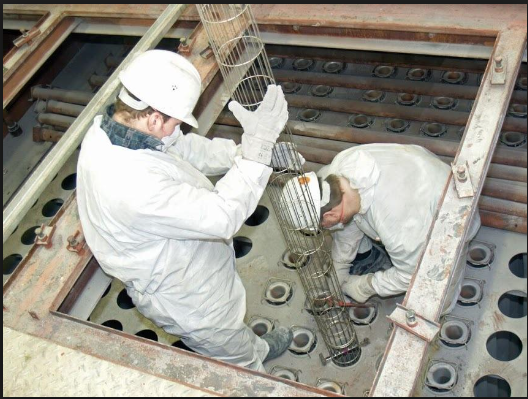FILTER ELEMENT REPLACEMENT FOR AN ALUMINUM SMELTER’S OFF-GAS DUST COLLECTOR (AA1)
ISSUE
Replacing filter elements in large dust collectors, such as those for aluminum smelter off gases, is always a very costly operation in terms of man power and consumables. Also, planning deficiencies have often lead to operating issues, breakdowns and emissions overshoots, all of which can have disastrous economic impacts.
Therefore, in order to bring down these costs, it is imperative to have a good filter element monitoring and replacement plan.
TECHNOLOGICAL CHALLENGE
Minimum cost can be achieved when filter elements are replaced right after their useful life has ended. Knowing this time is thus of the utmost importance for good filter element maintenance planning. This is where STS Canada has an added value: using methods developed through years of experience, useful life can be determined with simple lab analysis on used filter elements.
Depending on the level of analysis, one can determine the element's deterioration, residual life and/or damage cause. In this present history case, STS was given the task of determining the deterioration level of 9 filter tubes coming from 4 different scrubbers at an alumina smelter's off-gas treatment center.
RECOMMENDED SOLUTIONS
STS Canada performed the analyses and determined the elements' physical, mechanical, and aeraulics properties. The goal was to look at the elements' deterioration level to determine whether the end of their useful life had been reached.
RESULTS
Performing the aforementioned analyses demonstrated that the useful life had not been reached yet. However, the level of degradation of the filter elements' aeraulics properties was such that STS Canada recommended that their replacement be planned at the next scheduled shutdown within the next 6 months. In so doing, the company ensured fluid operations and reduced unscheduled shutdown costs and impacts. Such a choice also made sure emissions overshoot were avoided and penalties did not ensue.

INDUSTRY
Aluminum smelters
Anode baking
Off-gas treatment center
Dust Clooector Unit
LEVEL OF INTERVENTION
Used filter element analytical assessment
ESTIMATED COSTS
9500$YEAR
2012